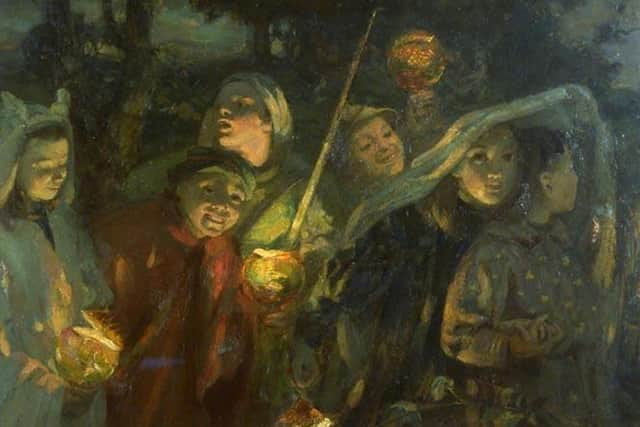Samhain: Bonfires, neeps and guising in sheep skulls during the festival that became Halloween
The Celtic festival of Samhain, which later appeared on the Christian calendar as All Hallows Eve, which then became known as Halloween, marked the coming of winter and was traditionally celebrated with more merriment than any other season of the year, according to accounts.
"Samhain is a ritualised, ceremonial connection with the dead that permeates through the Gaidhealtachd, once creating a connection without the materialistic consumerism of Halloween,” said Catherine MacPhee, archivist at Skye and Lochalsh Archive Centre.
Advertisement
Hide AdAdvertisement
Hide AdIn parts of the Western Isles, October 31 was known as Oidhche nan Cleas, or the Night of Tricks.


Then, people disguised themselves as harmful spirits in order to protect themselves from bad forces. On South Uist, sheepskins – including the scraped-out skull and ears – were commonly used to hide the identity of a guiser.
Ancestors were honoured and invited home, with food prepared for the living and the dead.
Large fires – or samhnagan – were traditionally built from ferns and tar barrels. There are accounts of bones of slaughtered livestock being cast into the flames in some parts, with the embers then used to light household fires in a bid to distribute protective forces.
Reverend James Robertson, minster at Callander in the late 18th and 19th Century, wrote of fires being lit in hamlets at sundown on the October 31.
Neep lanterns started to appear during the medieval period, according to accounts.
As the evening wore on, games began to foretell the future husbands and wives of those playing.
One game, Pull the Stalk, put blindfolded players into a vegetable patch to dig up a piece of kale, with the characteristics of their chosen stalk determining the nature of their spouse-to-be. The dirtier the root, the richer they would be with the flavour of the kale heart fortelling if they were to be bitter or sweet by nature.
Advertisement
Hide AdAdvertisement
Hide AdMs MacPhee recalled a story about a young woman in Skye, who played the game while her sailor lover was away in the East Indies on Samhain, with the tale recorded by folklorist Rev.John Gregorson Campbell in his book The Gaelic Otherworld
As she grasped a stock to pull it, a knife dropped from the sky and stuck in the plant. When the man returned, she learned that on that very night and about the same hour, he was standing near the ship’s bulwark, looking over the side, with a knife in his hand.
Campbell wrote: "He was thinking of her, and in his reverie the knife fell out of his hand and over the side. The young woman produced the knife she found in the kail-stock, and it proved to be the very knife her sailor lover had lost.”
Sometimes, two nuts were put by the fire beside to represent two people known to the group. As they burned together, or flared up alone, or leaped away from each other the future connection of the pair – or rejection of each other – was foretold.
Some believe many of the old Halloween rituals were taken to America by Scots and Irish immigrants with customs later re-labelled and sold back home.
A message from the Editor:
Thank you for reading this article. We're more reliant on your support than ever as the shift in consumer habits brought about by coronavirus impacts our advertisers.
If you haven't already, please consider supporting our trusted, fact-checked journalism by taking out a digital subscription.
Comments
Want to join the conversation? Please or to comment on this article.
